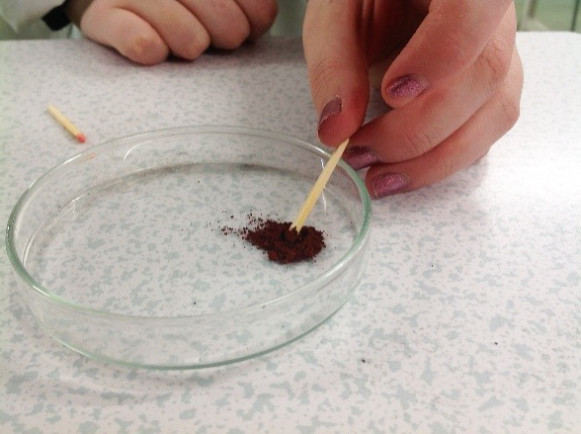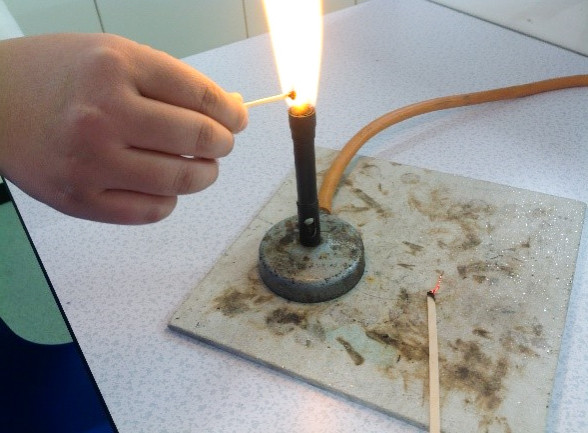13th January 2025
Chemistry Society – extracting iron using a match head
Our ChemSoc recently tried our hand at re-creating the blast furnace reaction but in miniature, using a match head. A small group of specially trained ESOL students also joined us and did an excellent job of following the chemistry, and performing the procedure safely. A short video explaining how it works can be found here
A walkthrough of a typical first year A-level chemistry question that relates to this reaction can be found here


Match is wetted and coated in iron (III) oxide……before being heated in a Bunsen flame.
The iron(III)oxide can be proven to be non-magnetic by moving a magnet about underneath the petri dish.
This process of heating extracts the iron from the iron(III)oxide by reduction – using sodium carbonate mixed with the iron(III)oxide as a catalyst which lowers the activation energy, meaning the high temperatures in a blast furnace are not required.
Moving a magnet under the petri dish after grinding up what’s left of the match head and emptying it back into the petri dish reveals that newly-formed iron particles now move about as they follow the magnet – see the two clips below for the final results!
Click here for A1 chemistry student Anna’s video
Click here for ESOL student Mohammed’s video
